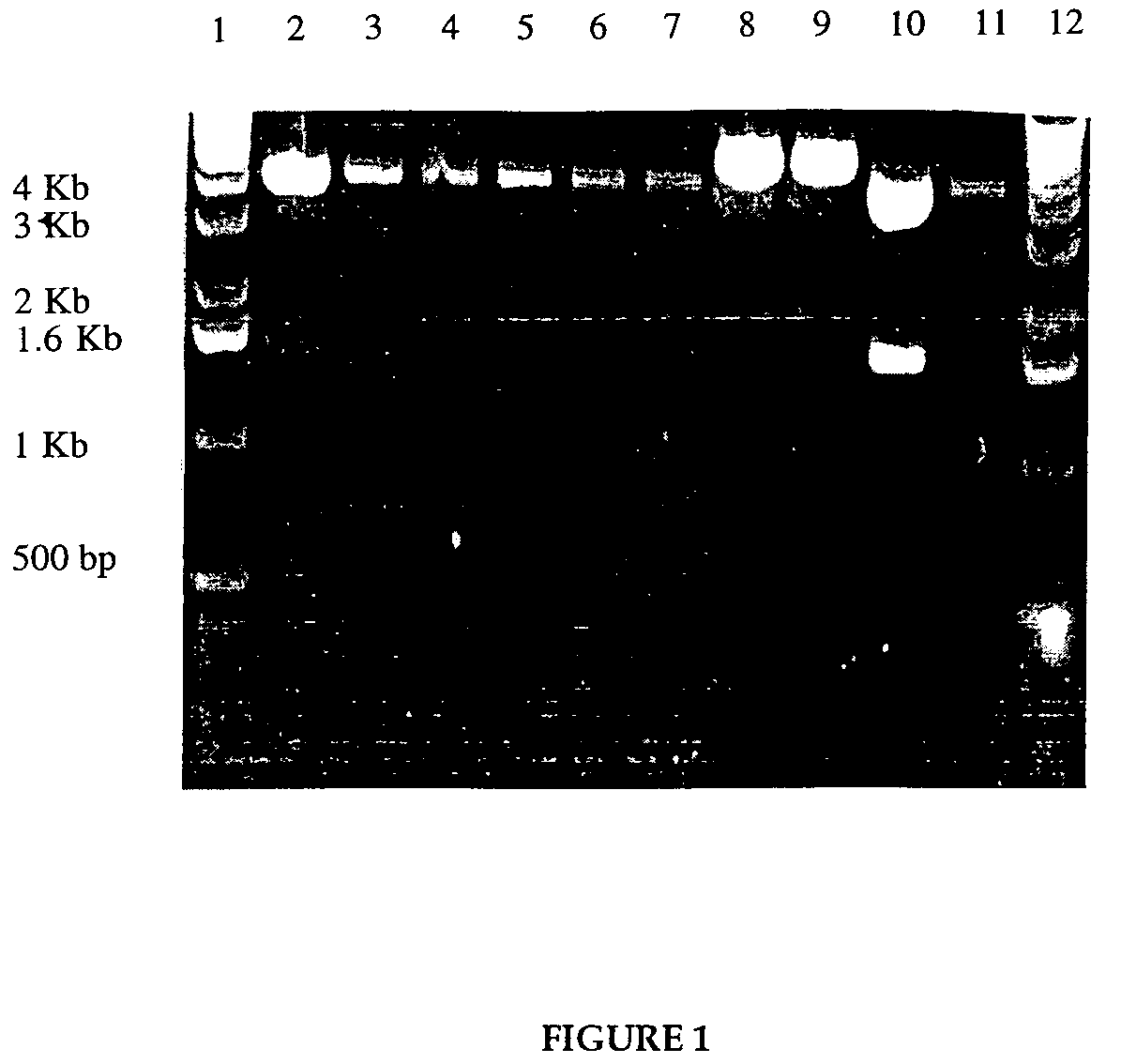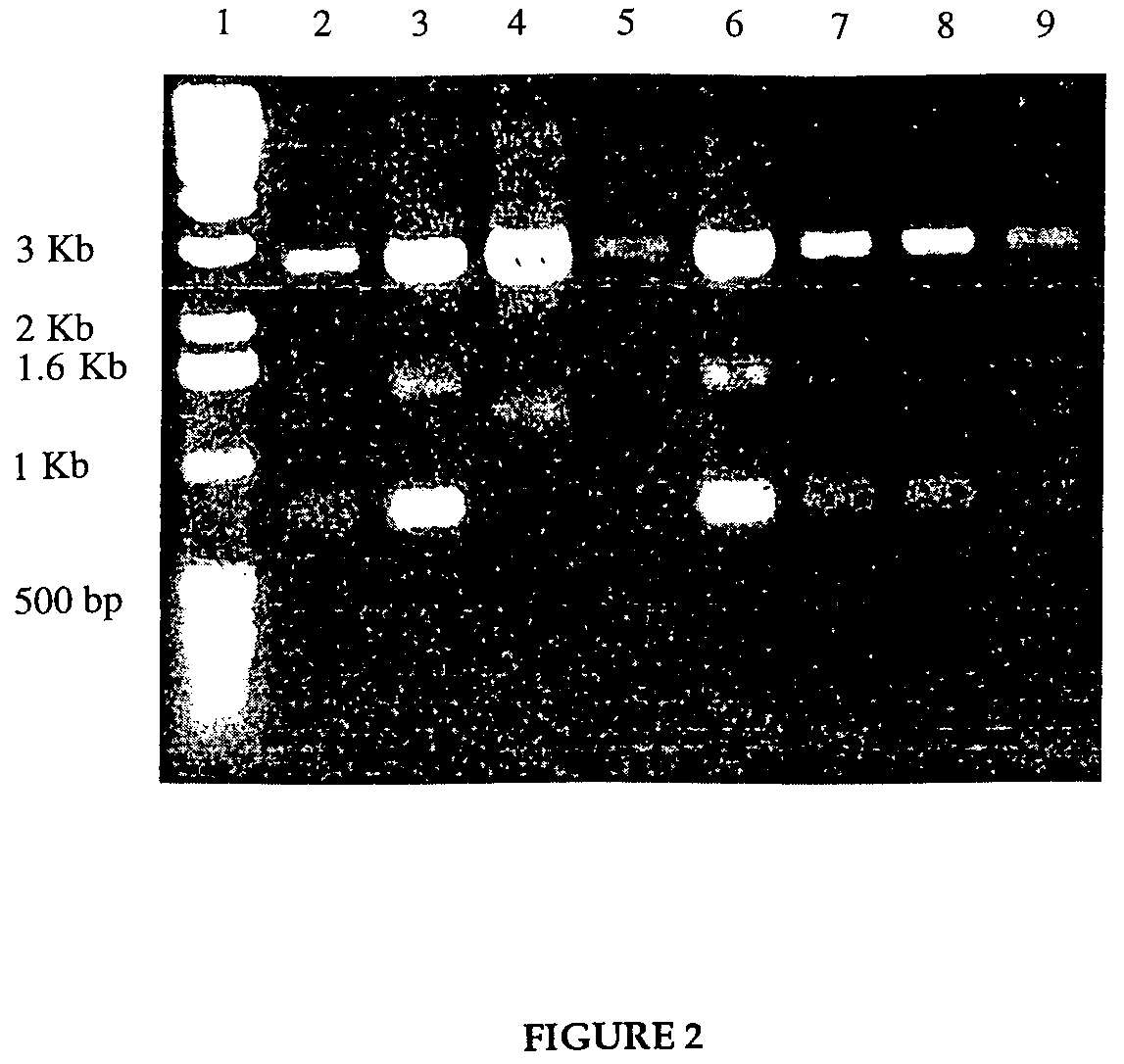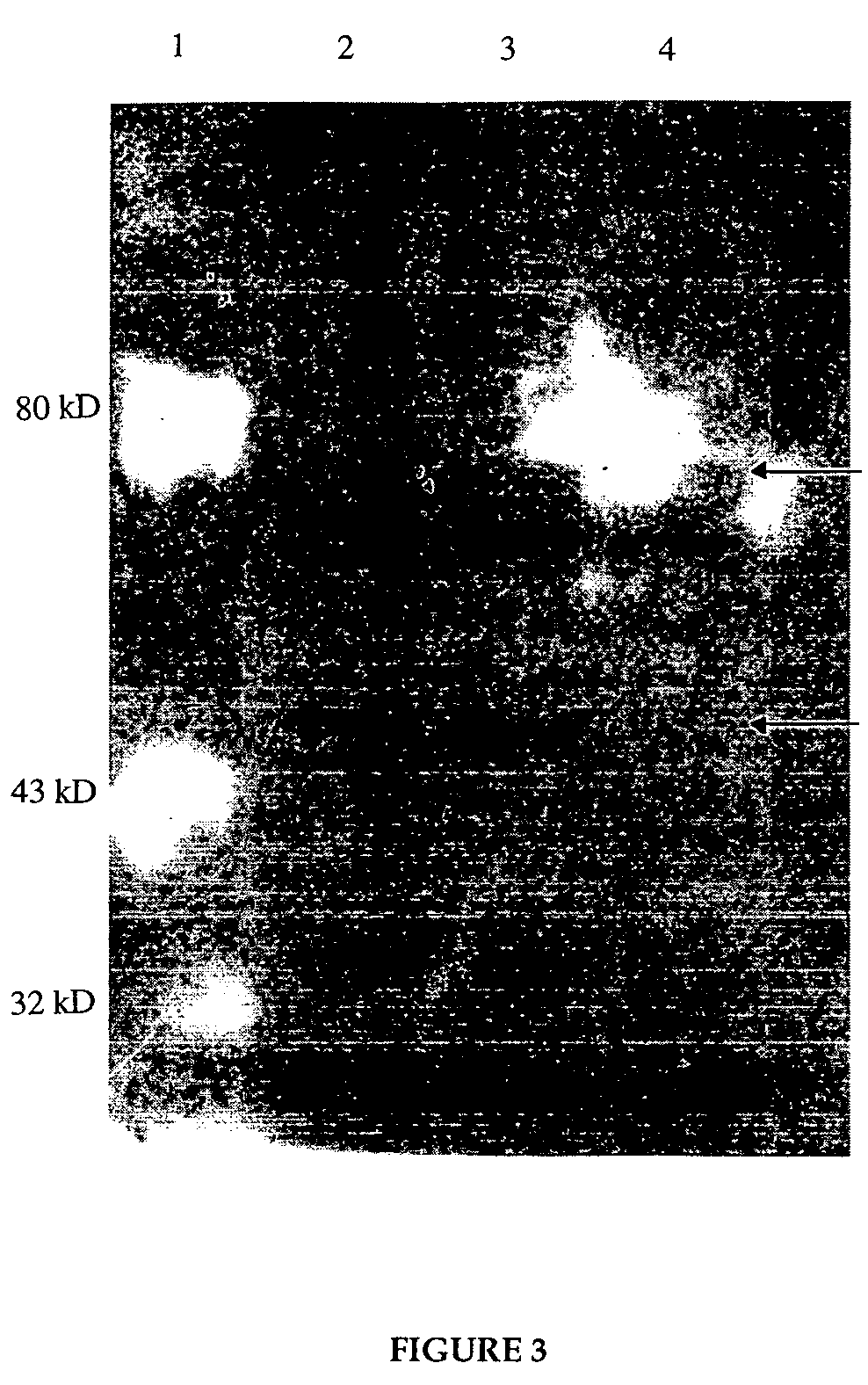Live vaccine for human immunodeficiency virus
a technology of immunodeficiency virus and vaccine, which is applied in the field of molecular biology and biochemistry, can solve the problems of weaker responses, no such study has ever been attempted in humans, and difficult to elicit such responses at the mucosal surfa
- Summary
- Abstract
- Description
- Claims
- Application Information
AI Technical Summary
Benefits of technology
Problems solved by technology
Method used
Image
Examples
example 1
Cloning of a Reverse Transcriptase-Lpp-OmpA Construct
[0067]The plasmid pKRT2 containing reverse transcriptase gene was obtained from the NIH AIDS Reagent Bank. A second plasmid, pTX101, containing the genes for the fusion protein construct of lpp-ompA was obtained from Dr. C. Earhart, at the University of Texas at Austin. A third plasmid, pSP72, was obtained from Promega. First, an intermediate plasmid pSP72-RT was constructed wherein the reverse transcriptase gene from the pKRT2 plasmid was transferred into the pSP72 plasmid. The reverse transcriptase gene contained in pKRT2 was modified by the polymerase chain reaction (PCR), to contain new restriction sites that would allow for insertion of the reverse transcriptase gene into the plasmid pSP72. Plasmids were digested with BamHI and HindIII, and run on 1% agarose gel to screen for the right clones.
[0068]The second step in the cloning involved inserting the lipoprotein promoter and lipoprotein-ompA sequence in front of the reverse ...
example 2
Cloning of a Transactivating (Tat) Protein-Lpp-OmpA Construct
[0073]To construct a vector containing the genetic sequence resulting in the fusion protein of lpp-ompA-HIV-1 Tat, the gene for the Tat protein was obtained from the NIH AIDS Reagent Bank, supplied as a glycerol stock of DH5α, containing the plasmid pTAT. The plasmid pTAT contained the 288 bp tat sequence, engineered to contain codons preferred by E. coli. The tat gene was flanked by a HindIII site 5′ to the gene, and followed by an EcoRI site. The plasmid that was selected to be the backbone, pSP72, contained both of these restriction sites in a multiple cloning region, so no alterations by PCR were needed. The first step was to insert the tat gene into the vector to construct an intermediate plasmid pSP72-Tat.
[0074]A culture was grown overnight of the E. coli containing the pTAT plasmid, and a second culture was grown of the E. coli containing the pSP72 plasmid, both in LB medium containing 100 μg / ml ampicillin. The desi...
example 3
Expression of Reverse Transcriptase Construct in E. coli
[0076]A 3 ml overnight culture of control DH5α, and DH5α-pHART were grown in LB medium at 37° C. with shaking. The control cells were grown in plain LB medium, while the reverse transcriptase containing cells were grown in LB medium containing 500 mg / ml of ampicillin. The following day, 10 ml of LB amp, or LB were inoculated with 200 ml of these overnight cultures and grown for 4 hours. At this time, 5 ml of the DH5α-pHART culture was removed and placed in a fresh tube containing 50 ml of 0.1 M IPTG (isopropyl β-D-thiogalactopyranoside). The cells were grown for an additional 2.5 hours. 1 ml aliquots of control, DH5α-pHART induced and DH5α-pHART uninduced cultures were removed and pelleted in the presence of 40 ml of Complete Protease Inhibitors (Boehringer Mannheim). Cell pellets were resuspended in 60 ml water, 40 ml protease inhibitors, and 100 ml of 2× SDS Tris-Glycine sample buffer (Novex) containing DTT.
[0077]Samples wer...
PUM
| Property | Measurement | Unit |
|---|---|---|
| Immunogenicity | aaaaa | aaaaa |
| Exposure limit | aaaaa | aaaaa |
| Strain point | aaaaa | aaaaa |
Abstract
Description
Claims
Application Information
 Login to View More
Login to View More - R&D
- Intellectual Property
- Life Sciences
- Materials
- Tech Scout
- Unparalleled Data Quality
- Higher Quality Content
- 60% Fewer Hallucinations
Browse by: Latest US Patents, China's latest patents, Technical Efficacy Thesaurus, Application Domain, Technology Topic, Popular Technical Reports.
© 2025 PatSnap. All rights reserved.Legal|Privacy policy|Modern Slavery Act Transparency Statement|Sitemap|About US| Contact US: help@patsnap.com



